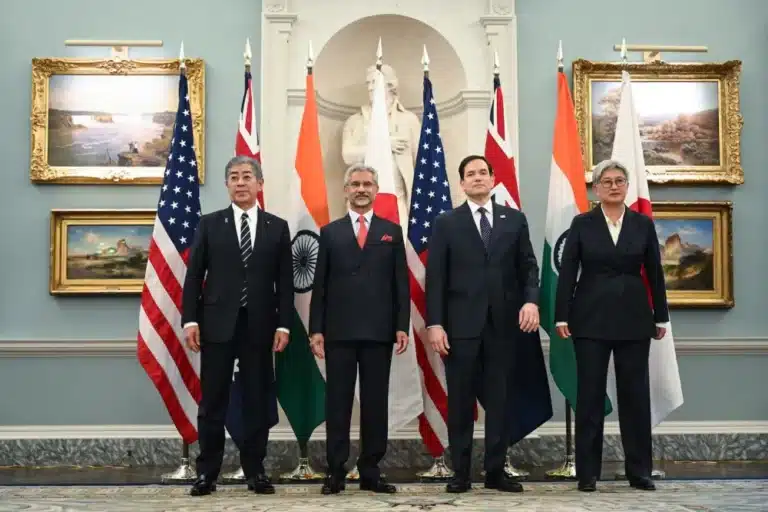Read the Op-Ed
President Donald Trump’s message yesterday was that the shooting part of America’s current conflict with Iran is all but over. It remains to be seen whether Iran agrees. But regardless that doesn’t mean the administration is done. It is planning “punishing economic sanctions” that “will remain until Iran changes its behavior,” Trump said in a White House address. Unfortunately, new sanctions will only compound the problems with the Trump administration’s Iran policy.
There are certainly additional sanctions measures that could be brought to bear against Iran, notwithstanding the considerable sanctions already in place. The United States could impose a blanket prohibition on any transactions with foreign companies, banks, or individuals that engage in any business with Iran that is not strictly humanitarian. Existing U.S. sanctions target only third parties who deal with select Iranian industries, companies, or individuals. A universal ban would be a major expansion and would also be the first time the United States ever tried to create a global embargo on a country using only its own laws. Trump could take a more selective approach, again with humanitarian exceptions. He could alternatively just add to the list of sanctioned Iranian industries, including perhaps Iran’s consumer goods industry. He could also announce that U.S. sanctions would be imposed on any foreign bank that engages in transactions with Iran.
These types of sanctions would be new and would certainly intensify what the administration calls its “maximum pressure” campaign. But they would not materially degrade Iran’s economy beyond the damage already done by the existing sanctions, and they would simultaneously create new friction with U.S. partners and allies.
The current sanctions, which date to the Trump administration’s decision in 2018 to withdraw from the Iran nuclear deal, have already damaged considerably Iran’s economy, just as they did from 2006 to 2013 under the Bush and Obama administrations. The U.S. effectively prohibits Iran from selling its oil abroad as well as receiving investment for the development of the industry at home. And while the country has found ways of diversifying its economy away from hydrocarbons, it still can’t do without them. The United States has already added to these sanctions by targeting several other Iranian industries of potential value, including its automotive, construction, and metals industries. Combined with existing sanctions on Iran’s access to international banking, insurance, transportation, and other services, what remains to be sanctioned is—generally speaking—small fry. Imposing measures against them would frustrate Iran, but it has the ability to evade sanctions, particularly by trading with its neighbors. Our most powerful sanctions weapons have been already deployed.
New sanctions would upset U.S. partners, including those with continued economic ties to Iran. China, Japan, South Korea, India, and Europe all maintain trading ties with Iran—albeit at lower levels than in the past—in the remaining industries the U.S. might want to target. These countries would reasonably question if these sanctions really help creating diplomatic leverage on Iran over its nuclear program and regional activities, as the Trump administration says it wants to do. Sanctions would look to U.S. allies like an attempt to further destabilize Iran politically, contributing the narrative that the United States is after regime change.
If the perceptions of America’s Iran strategy among most of its allies aren’t at rock bottom now, more sanctions are the way to put them there. To regain the initiative with Iran, the U.S. should focus on the second part of Trump’s comments yesterday. The president said he wants to develop a new diplomatic approach; to do so, he should build on the success of the strategy that led to the 2015 nuclear agreement in the first place.
Taken at its word, the Trump administration’s only quibble with the past U.S. strategy is that it stopped too soon, before economic pressure had sufficiently built against the Iranians. Though I disagree with this assertion, on its face, it supports resurrecting the dual-track strategy used during the time frame in which growing sanctions pressure was accompanied by good-faith efforts at diplomacy.
Both Presidents George W. Bush and Barack Obama committed to a diplomatic solution with Iran and actively worked at it by consulting with partners and allies to develop negotiating frameworks that were presented to Iran in May 2006 and 2008 respectively. They built into the sanctions work they pursued a commitment to halt the imposition of sanctions once confidence was restored in Iran’s nuclear program—rather than seek, as the Trump administration does now, a comprehensive agreement on all of Iran’s problematic policies and behaviors. They codified these commitments in U.N. Security Council resolutions. Offers of direct talks and dialogue demonstrated over time that the United States was not interested in regime change, a prerequisite for serious talks and a real deal.
Rather than developing new sanctions packages, the president could instruct the State Department to work with partners again on a realistic framework for future talks. Iran might not accept an opening like that, particularly after the killing of Qassem Soleimani and the abrupt, unnecessary withdrawal from the nuclear agreement by the United States in 2018. Iranian officials have been clear that they do not trust the Trump administration and see in other negotiations—such as the contentious replacement of NAFTA—the perils of talks with this administration. But it would put pressure on Iran to talk and would at least shift the discussion back toward the possibilities intrinsic to dialogue and negotiations, especially a ratcheting down of tensions and eventually an agreement both sides can live with. That would be a lot more meaningful than knocking yet another percentage point off Iran’s already cratering GDP.





